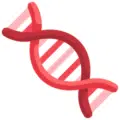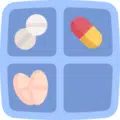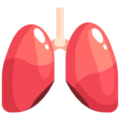Author(s)
Amanda C. Capino, Pharm.D.
Reviewed By
Jenna Snoga, Pharm.D.
Oralia V. Bazaldua, Pharm.D., BCPS
A mom recieves a prescription for an oral clindamycin solution for her daughter. The instructions: “give one teaspoon by mouth three times daily for 10 days.” The mom is given a medicine cup marked with “mLs” and “tsp” on the side. Five days later she returns complaining that she ran out of medicine. After a brief interview, you determine that she has been giving her daughter one “cupful” instead of one “teaspoon.”
This brief case vignette is all too common. Children are often given liquid dosage forms for both prescription and over-the-counter medicines. Several studies have shown that caregivers unintentionally put children at risk by inaccurately measuring the dose of liquid medications.1 In one study (2010), caregivers were asked to measure a 5 mL dose using six different devices (2 medicine cups with either calibrated or etched markings, a dropper, a dosing spoon, and 2 oral syringes with or without a bottle adapter).2 Less than one third of the caregivers measured an accurate dose using the medicine cup with calibrated markings. This improved to about half when caregivers used the cup with etched markings and to greater than 85% using the other devices. A subsequent study (2014) examined the association between medication errors and using the terms “teaspoon” or “tablespoon” vs. milliliter.3 Again, a high percentage of caregivers made an error when measuring the intended dose. Moreover, using the terms teaspoon or tablespoon resulted in more dosing errors than when mL units were used in the instructions.
One potential source of errors is caregiver confusion when they are not provided measuring devices that have a consistent unit of measure. Another study collected 58 different measuring devices from 22 community pharmacies in one city and analyzed their units of measure and markings.4 All devices were marked with mL but only 79% were also marked in teaspoons.
In 2015, the American Academy of Pediatrics (AAP) adopted a policy statement which recommends exclusively using milliliters for dosing instructions to prevent dosing errors.5 Moreover, they recommended that patients and families be provided with measuring devices that allow for precise measurement (e.g., oral syringes).
Most recently (2016), Yin and colleagues conducted a study to examine labeling that may contribute to medication errors.6 They wanted to identify attributes of labels and measuring devices that could be improved. In this randomized, controlled study they sought to determine whether dosing error rates are affected by tool characteristics such as type (i.e., syringe vs. measuring cup) or markings (i.e., mL vs. tsp). And similar to the case vignette (above), they also examined whether a discordance between units of measurement on labels and measuring devices resulted in more errors.
Both English or Spanish-speaking caregivers were invited to participate. All participants were at least 18 years of age and responsible for administering medications. They were excluded if they had poor visual acuity or a hearing impairment.
Caregivers were randomized to one of five study groups. The groups differed in terms of the way measuring units were written on the medication label as well as the measuring device provided (Table 1). Because a milliliter-only system has been recommended (i.e., mL on medication label and measuring device), group 1 received the gold standard. (See Table 1)
Table 1: Caregiver Groups – Units Used on Medication Labels and Measuring Devices6
|
Group |
Units on Medication Label |
Units on Measuring Devices |
Example of 5 mL or 1 tsp on Medication Label |
Agreement of Units on Medication Label vs. Measuring Device |
|
1 |
mL |
mL |
5 mL |
Fully matched pair |
|
2 |
mL and tsp |
mL and tsp |
5 mL (1 tsp) |
Fully matched pair |
|
3 |
mL and teaspoon |
mL and tsp |
5 mL (1 teaspoon) |
Partially matched pair |
|
4 |
mL |
mL and tsp |
5 mL |
Not matched |
|
5 |
teaspoon |
mL and tsp |
1 teaspoon |
Not matched |
Caregivers were each given 9 labels and 3 measuring devices (i.e., 10 mL syringe with 0.2 mL increments, 10 mL syringe with 0.5 mL increments, and 30 mL medicine cup). They were asked to measure 3 doses (2.5, 5, and 7.5 mL) with each measuring device. In addition, caregivers completed a sociodemographics survey.
More than 2,100 caregivers were randomized. The dosing assessments were completed by 2,099 caregivers. The baseline characteristics were similar among the five groups. The majority of participants (~89%) were mothers. The mean caregiver age was ~30 years and the majority were Hispanic (~55%) but a substantial percentage were African American (~33%). Slightly more than 30% of caregivers did not complete high school and ~36% were identified as having low health literacy. Many of the participants (~16%) had children with chronic illnesses that required daily medications.
The primary outcome was a dosing error. A dosing error was considered any dose that deviated more than 20% from the dose on the labeled instructions. Overall, 84.4% of caregivers made at least one dosing error and the majority of the errors (68%) were overdoses. There were more dosing errors seen with group 5 (i.e., teaspoon on label and mL and tsp on device) compared to the other groups (See Table 2). Surprisingly, group 1 (i.e., the gold standard) was not associated with the lowest percentage of dosing errors. Large errors occured in each group but there were no notable differences among the groups. The authors noted that a language interaction was observed, but there was no difference by health literacy.
Table 2: Dosing Errors by Group6
|
|
Group 1 |
Group 2 |
Group 3 |
Group 4 |
Group 5 |
P-value |
|
Dosing error 20% deviation % of trials with errors aOR (95% CI) p-value
Large error >2x the dose % of trials large errors aOR (95% CI) p-value |
25.3 1 (ref)
2.9 1 (ref)
|
22.8 0.9 (0.7-1.04) 0.1
2.7 1 (0.7-1.4) 0.9 |
22.9 0.9 (0.7-1.03) 0.1
3 1.1 (0.8-1.6) 0.7 |
25.4 1 (0.8-1.2) 0.8
3.5 1.2 (0.8-1.7) 0.4 |
29.6 1.2 (1.01-1.4) 0.04
3.6 1.4 (0.97-1.9) 0.08 |
0.002
0.08 |
With regard to specific measuring devices, there were errors associated with each device (See Table 3) but errors were significantly more likely when a medicine cup (aOR = 4.6, 95% CI, 4.2-5.1) was used. The authors reported that the risk of making an error with a medicine cup varied by health literacy and language.
Table 3: Dosing Errors by Measuring Device6
|
|
Measuring Cup |
Syringe with |
Syringe with |
P-value |
|
Dosing error >20% deviation % of trials with errors aOR (95% CI) p-value
Large error >2x the dose % of trials large errors aOR (95% CI) p-value |
43 4.6 (4.2-5.1) <0.001
5.8 3.8 (3.1-4.7) <0.001 |
16.7 1 (0.96-1.1) 0.4
1.8 1 (0.8-1.3) 0.9 |
16.2 1(ref)
1.8 1 (ref) |
<0.001
<0.001 |
Strengths of this study included the large sample size and the prospective, cross-over design. Labels were offered in two languages and caregivers were required to interpret medication labels, not just measure a dose. Thus the investigators were able to evaluate error rates using a variety of labels, doses, and measuring devices. One limitation — the data may not be generalizable to less common dose measurements. For example, smaller doses requiring measuring devices with more precise increments could potentially be more challenging. The definition of what qualifies as a clinically important dosing error is certainly debatable and varies by medication.
While errors were observed in all 5 groups, the highest rate was seen in group 5 (label in teaspoon; measuring device in mL and tsp) as hypothesized. Medicine cups were associated with the highest risk of error especially when smaller doses were measured. Thus the authors recommended that oral syringes — not medicine cups — be provided to caregivers of young children to reduce medication errors.
Although it was not surprising that errors occurred, this study reminds us to consider not only the medication and dose but also how the dose will be measured and delivered. Unfortunately there was a high rate of errors observed in this study even when the gold standard was used. Therefore it is essential to prescribe/recommend measurable doses, include units on labels (mL), provide an accurate measuring device (oral syringe with mL markings), and ensure caregiver understanding.
Let’s revisit the case vignette. The directions for use read “give one teaspoon by mouth three times daily for 10 days.” What strategies would you employ to prevent errors? Should all pharmacies be required to provide the same measuring device for oral liquids? Given that the gold standard (i.e., mL only instructions and measuring device with only mL markings) didn’t perform significantly better in this study, do you agree with the AAP recommendations?
- DeWalt D. Ensuring safe and effective use of medication and health care: perfecting the dismount. JAMA 2010;304: 2641-2.
- Yin HS, Mendelsohn AL, Wolf MS, et al. Parents’ medication administration errors: role of dosing instruments and health literacy. Arch Pediatr Adolesc Med 2010;164: 181-6.
- Yin HS, Dreyer BP, Ugboaja DC, et al. Unit of measurement used and parent medication dosing errors. Pediatrics 2014;134: 354-61.
- Honey BL, Condren M, Phillips C, Votruba A. Evaluation of oral medication delivery devices provided by community pharmacies. Clin Pediatr 2013;52: 418-22.
- Committee on Drugs. Metric units and the preferred dosing of orally administered liquid medications. Amer Acad of Pediatrics 2015;135: 784-7.
- Yin HS, Parker RM, Sanders LM, et al. Liquid medication errors and dosing tools: a randomized controlled experiment. Pediatrics 2016;138(4):e20160357






 iForumRx.org is a web-based community of practice designed to inform ambulatory care pharmacy specialists, pharmacy residents, and student pharmacists about high-quality, practice-changing evidence.
iForumRx.org is a web-based community of practice designed to inform ambulatory care pharmacy specialists, pharmacy residents, and student pharmacists about high-quality, practice-changing evidence.